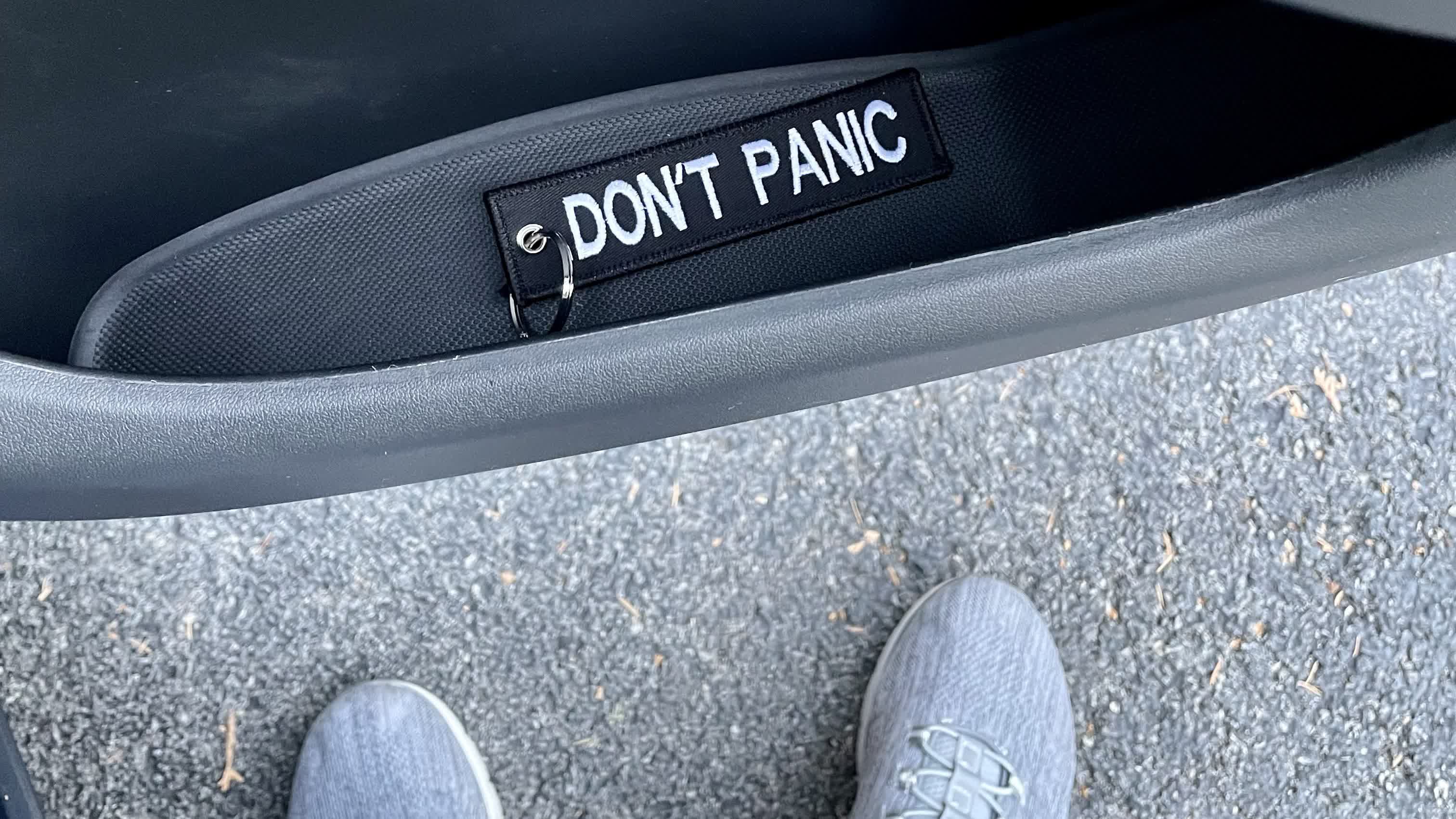Tesla owners install DIY rip cords to avoid being trapped behind all-electric doors
Facepalm: Like many electric vehicles, Teslas feature fully electric doors with emergency manual release mechanisms in case the car loses power. However, enough owners find Tesla's manual door openers insufficiently accessible that a market for custom escape latches has emerged.
Numerous deadly incidents have occurred in which Tesla drivers and passengers were trapped inside their vehicles following a crash or fire. In many cases, survivors were rescued only after bystanders or first responders broke the windows, as power loss had rendered the doors inoperable.
As a result, cautious Tesla owners have turned to various DIY solutions to make the vehicles' emergency release systems easier to access or more visible. These modifications have become so popular that some companies now mass-produce and sell them, highlighting a widespread concern over the accessibility of Tesla's emergency exits.
Electric vehicles often use buttons to operate doors via electric motors, keeping the handles flush with the body. Although eliminating analog door handles increases the risk of being locked in or out of the vehicle, multiple manufacturers have told Consumer Reports that the design offers several advantages.
Flush, motorized door handles improve aerodynamics and reduce weight, which enhances overall performance. Additionally, electronic safety systems can automatically open doors after a crash or prevent them from opening into the path of oncoming objects. However, users may struggle to open the doors due to software glitches or unfamiliarity with the technology.
Many Tesla owners also complain that the emergency latches are too well hidden. While locations vary by model, users can consult the owner's manual for guidance. For instance, the Model Y's front door release mechanism is located beneath an unmarked tab in front of the driver-side window switches. The rear door latches are even more obscure, tucked behind a small access door underneath the mat at the bottom of the door pocket.
// Related Stories
Owners often address the issue by tying ripcords to the manual release handles, sometimes attaching clearly marked eject tabs for visibility. One company, EV Dynamics, sells a cable with Velcro and snap-on attachments for In contrast, some other vehicles with electric doors offer more intuitive emergency release systems. For example, models from Audi, Ford, Fisker, and others allow the doors to open when users pull the handles forcefully or pull them twice.
Entering a vehicle with fully electric doors can also become difficult if the car loses power or the handles freeze. Manufacturers differ in how they address this problem. Some include traditional manual keys, while Tesla advises owners to use the mobile app to force the handle open.
#tesla #owners #install #diy #rip
Tesla owners install DIY rip cords to avoid being trapped behind all-electric doors
Facepalm: Like many electric vehicles, Teslas feature fully electric doors with emergency manual release mechanisms in case the car loses power. However, enough owners find Tesla's manual door openers insufficiently accessible that a market for custom escape latches has emerged.
Numerous deadly incidents have occurred in which Tesla drivers and passengers were trapped inside their vehicles following a crash or fire. In many cases, survivors were rescued only after bystanders or first responders broke the windows, as power loss had rendered the doors inoperable.
As a result, cautious Tesla owners have turned to various DIY solutions to make the vehicles' emergency release systems easier to access or more visible. These modifications have become so popular that some companies now mass-produce and sell them, highlighting a widespread concern over the accessibility of Tesla's emergency exits.
Electric vehicles often use buttons to operate doors via electric motors, keeping the handles flush with the body. Although eliminating analog door handles increases the risk of being locked in or out of the vehicle, multiple manufacturers have told Consumer Reports that the design offers several advantages.
Flush, motorized door handles improve aerodynamics and reduce weight, which enhances overall performance. Additionally, electronic safety systems can automatically open doors after a crash or prevent them from opening into the path of oncoming objects. However, users may struggle to open the doors due to software glitches or unfamiliarity with the technology.
Many Tesla owners also complain that the emergency latches are too well hidden. While locations vary by model, users can consult the owner's manual for guidance. For instance, the Model Y's front door release mechanism is located beneath an unmarked tab in front of the driver-side window switches. The rear door latches are even more obscure, tucked behind a small access door underneath the mat at the bottom of the door pocket.
// Related Stories
Owners often address the issue by tying ripcords to the manual release handles, sometimes attaching clearly marked eject tabs for visibility. One company, EV Dynamics, sells a cable with Velcro and snap-on attachments for In contrast, some other vehicles with electric doors offer more intuitive emergency release systems. For example, models from Audi, Ford, Fisker, and others allow the doors to open when users pull the handles forcefully or pull them twice.
Entering a vehicle with fully electric doors can also become difficult if the car loses power or the handles freeze. Manufacturers differ in how they address this problem. Some include traditional manual keys, while Tesla advises owners to use the mobile app to force the handle open.
#tesla #owners #install #diy #rip
0 Commentaires
·0 Parts
·0 Aperçu




